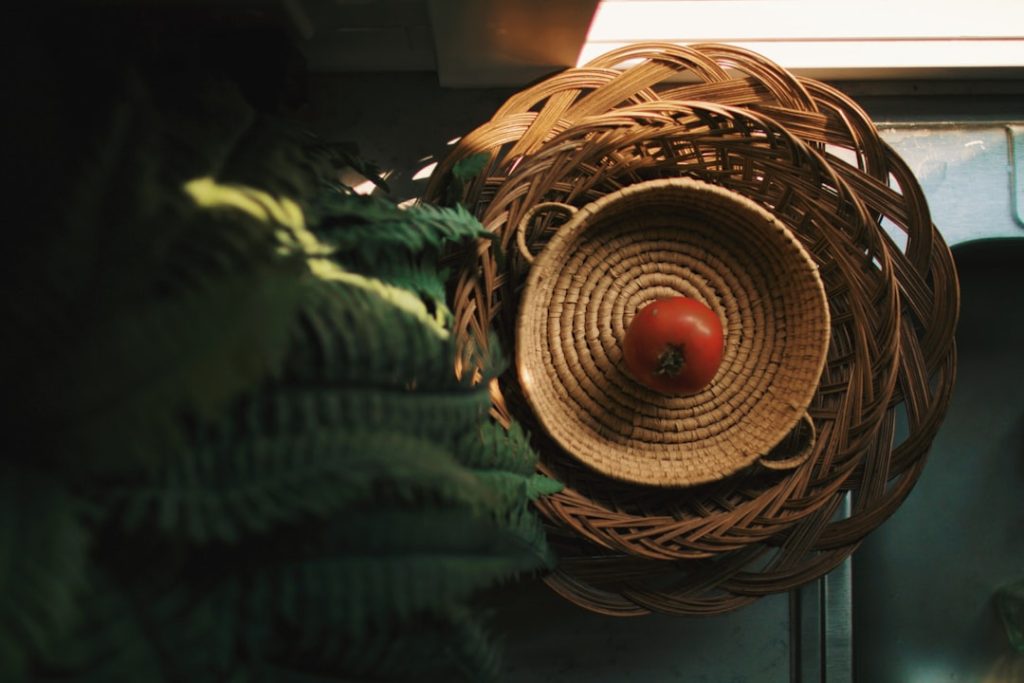Aglaonema, also known as Chinese evergreen, is a popular indoor plant that is loved for its beautiful foliage and low maintenance requirements. This tropical plant is native to the rainforests of Southeast Asia and is a member of the Araceae family. Aglaonema comes in a variety of colors and patterns, making it a versatile and attractive addition to any indoor space. Its leaves can be found in shades of green, silver, red, pink, and even cream, with different patterns such as stripes, speckles, and variegation. This diversity in appearance makes Aglaonema a favorite among plant enthusiasts and interior decorators alike.
Aglaonema is well-suited for indoor environments because it thrives in low light conditions, making it an ideal choice for offices, homes, and other indoor spaces with limited natural light. It is also known for its air-purifying properties, making it a popular choice for those looking to improve the air quality in their living or working spaces. With its ability to remove toxins such as formaldehyde and benzene from the air, Aglaonema is not only aesthetically pleasing but also beneficial for your health. Whether you are a seasoned plant enthusiast or a beginner looking to add some greenery to your space, Aglaonema is a fantastic choice that is sure to bring beauty and tranquility to any indoor environment.
Key Takeaways
- Aglaonema is a popular indoor plant known for its attractive foliage and air-purifying qualities.
- It thrives in low to medium light conditions and prefers temperatures between 65-80°F.
- Keep the soil consistently moist and provide high humidity to maintain ideal growing conditions for Aglaonema.
- Use a balanced liquid fertilizer and well-draining soil to ensure proper nourishment for your Aglaonema.
- Regularly prune and propagate your Aglaonema to promote healthy growth and prevent overcrowding.
Choosing the Right Location: Light and Temperature Requirements
When it comes to caring for Aglaonema, one of the most important factors to consider is its light and temperature requirements. As a tropical plant, Aglaonema thrives in warm and humid conditions, making it well-suited for indoor environments. When choosing a location for your Aglaonema, it is important to consider its light preferences. While Aglaonema can tolerate low light conditions, it will thrive in bright, indirect light. Placing your Aglaonema near a north or east-facing window is ideal, as it will receive the gentle, indirect sunlight it needs to grow and flourish.
In terms of temperature, Aglaonema prefers warm and consistent conditions. It does well in average room temperatures ranging from 65-80°F (18-27°C). It is important to avoid exposing your Aglaonema to extreme temperature fluctuations or drafts, as this can cause stress and damage to the plant. Additionally, it is important to keep your Aglaonema away from cold drafts or air conditioning vents, as these can cause the plant’s leaves to yellow and drop. By providing your Aglaonema with the right light and temperature conditions, you can ensure that it thrives and remains healthy in its indoor environment.
Watering and Humidity: Maintaining the Ideal Conditions
Proper watering and humidity levels are essential for maintaining the health and vitality of your Aglaonema. As a tropical plant, Aglaonema prefers consistently moist soil but can be sensitive to overwatering. It is important to allow the top inch of soil to dry out between waterings to prevent root rot and other moisture-related issues. When watering your Aglaonema, it is best to water thoroughly until water begins to drain from the bottom of the pot, ensuring that the entire root system receives moisture. It is important to avoid letting your Aglaonema sit in standing water, as this can lead to root rot and other problems.
In addition to proper watering, maintaining adequate humidity levels is important for the health of your Aglaonema. While Aglaonema can tolerate lower humidity levels, it will thrive in higher humidity environments. To increase humidity around your Aglaonema, you can mist the leaves regularly or place a humidifier near the plant. Another option is to place a tray of water and pebbles near the plant, allowing the water to evaporate and increase the humidity around the plant. By paying attention to watering and humidity levels, you can ensure that your Aglaonema remains healthy and vibrant in its indoor environment.
Fertilizing and Soil Requirements: Nourishing Your Aglaonema
| Soil Requirement | Fertilizing Frequency | Fertilizer Type |
|---|---|---|
| Well-draining, fertile soil | Every 4-6 weeks during growing season | Water-soluble balanced fertilizer |
Fertilizing and providing the right soil conditions are essential for nourishing your Aglaonema and promoting healthy growth. When it comes to fertilizing, it is best to use a balanced, water-soluble fertilizer formulated for houseplants. During the growing season in spring and summer, you can fertilize your Aglaonema every 4-6 weeks to provide it with the nutrients it needs to thrive. It is important to follow the instructions on the fertilizer package and avoid over-fertilizing, as this can lead to salt buildup in the soil and cause damage to the plant.
In terms of soil requirements, Aglaonema prefers well-draining, peat-based potting mix that retains moisture without becoming waterlogged. A good potting mix will provide the right balance of aeration and moisture retention for your Aglaonema’s root system. It is important to repot your Aglaonema every 2-3 years to refresh the soil and provide the plant with fresh nutrients. When repotting, choose a pot that is slightly larger than the current one to allow room for growth. By providing your Aglaonema with the right fertilization and soil conditions, you can ensure that it remains healthy and vibrant in its indoor environment.
Pruning and Propagation: Keeping Your Aglaonema Healthy and Vibrant
Pruning and propagation are important aspects of caring for your Aglaonema and keeping it healthy and vibrant. Regular pruning helps maintain the shape and appearance of your Aglaonema while removing any dead or yellowing leaves. When pruning your Aglaonema, it is important to use clean, sharp scissors or pruning shears to make clean cuts without causing damage to the plant. You can also remove any leggy or overgrown stems to encourage new growth and maintain a compact shape.
Propagation is another way to keep your Aglaonema healthy and vibrant by creating new plants from existing ones. The most common method of propagation for Aglaonema is through stem cuttings. To propagate your Aglaonema, simply take a stem cutting with several leaves attached and place it in water or moist potting mix until roots develop. Once roots have formed, you can transplant the cutting into its own pot and care for it as you would a mature plant. Propagation allows you to create new plants from your existing Aglaonema, giving you the opportunity to expand your collection or share plants with friends and family.
Common Pests and Diseases: How to Protect Your Aglaonema

While Aglaonema is generally a low-maintenance plant, it can be susceptible to certain pests and diseases that can affect its health and appearance. One common pest that can affect Aglaonema is spider mites, which are tiny insects that feed on the plant’s sap and cause stippling on the leaves. To protect your Aglaonema from spider mites, it is important to regularly inspect the leaves for signs of infestation and treat any affected plants with insecticidal soap or neem oil.
Another common pest that can affect Aglaonema is mealybugs, which are small, white insects that feed on the plant’s sap and leave behind a sticky residue. To protect your Aglaonema from mealybugs, it is important to inspect the plant regularly for signs of infestation and treat affected plants with insecticidal soap or neem oil. In addition to pests, Aglaonema can also be susceptible to diseases such as root rot and leaf spot. To protect your Aglaonema from diseases, it is important to provide proper watering and humidity levels while avoiding overwatering and allowing for good air circulation around the plant.
Decorating with Aglaonema: Creative Ways to Showcase Its Beauty
Aglaonema’s beautiful foliage makes it a versatile and attractive addition to any indoor space, allowing for creative ways to showcase its beauty. Whether you are looking to add a touch of greenery to your home or office, there are many creative ways to decorate with Aglaonema. One popular way to showcase Aglaonema’s beauty is by placing it in a decorative pot or planter that complements its foliage colors and patterns. You can choose a pot that matches your decor or opt for a bold statement piece that adds visual interest to any room.
Another creative way to decorate with Aglaonema is by grouping several plants together to create a lush display of foliage. You can mix different varieties of Aglaonema with varying leaf colors and patterns to create an eye-catching arrangement that adds depth and texture to any space. Grouping plants together also allows you to create focal points in a room or fill empty corners with vibrant greenery.
In addition to traditional pots and planters, you can also showcase Aglaonema’s beauty by incorporating it into terrariums or glass containers. Terrariums provide a unique way to display plants while creating a self-contained ecosystem that requires minimal maintenance. You can create a mini jungle by combining different plants in a terrarium or showcase a single Aglaonema as a striking focal point.
Whether you choose traditional pots or get creative with terrariums, there are endless ways to showcase Aglaonema’s beauty in your home or office. With its diverse foliage colors and patterns, this versatile plant adds visual interest and tranquility to any indoor environment.
In conclusion, caring for Aglaonema involves understanding its light and temperature requirements, proper watering and humidity levels, fertilizing and soil requirements, pruning and propagation techniques, as well as protecting it from common pests and diseases. By providing the ideal conditions for your Aglaonema, you can ensure that it remains healthy and vibrant in its indoor environment while showcasing its beauty in creative ways that enhance any space. Whether you are an experienced plant enthusiast or new to caring for indoor plants, Aglaonema is a fantastic choice that brings beauty and tranquility into any home or office setting.
If you’re interested in learning more about caring for aglaonema plants, you should check out this article on Boloonline. They offer tips and advice on how to keep your aglaonema healthy and thriving in your home. Whether you’re a beginner or an experienced plant parent, there’s always something new to learn about caring for these beautiful and versatile plants.
FAQs
What is Aglaonema?
Aglaonema is a genus of flowering plants in the arum family, Araceae. They are native to tropical and subtropical regions of Asia and New Guinea.
What are the common names for Aglaonema?
Aglaonema is commonly known as Chinese evergreen or Philippine evergreen.
What are the characteristics of Aglaonema plants?
Aglaonema plants are known for their attractive, glossy, and variegated leaves. They come in a variety of colors and patterns, making them popular as indoor ornamental plants.
How do you care for Aglaonema plants?
Aglaonema plants thrive in indirect light and prefer well-draining soil. They require regular watering, but it’s important not to overwater as they are susceptible to root rot. They also benefit from occasional fertilization and regular cleaning of their leaves.
Are Aglaonema plants toxic to pets?
Yes, Aglaonema plants are toxic to pets if ingested. It’s important to keep them out of reach of cats and dogs to prevent any potential harm.
What are the common varieties of Aglaonema?
Some common varieties of Aglaonema include Aglaonema ‘Silver Bay’, Aglaonema ‘Red Gold’, and Aglaonema ‘Emerald Beauty’. Each variety has its own unique leaf color and pattern.


